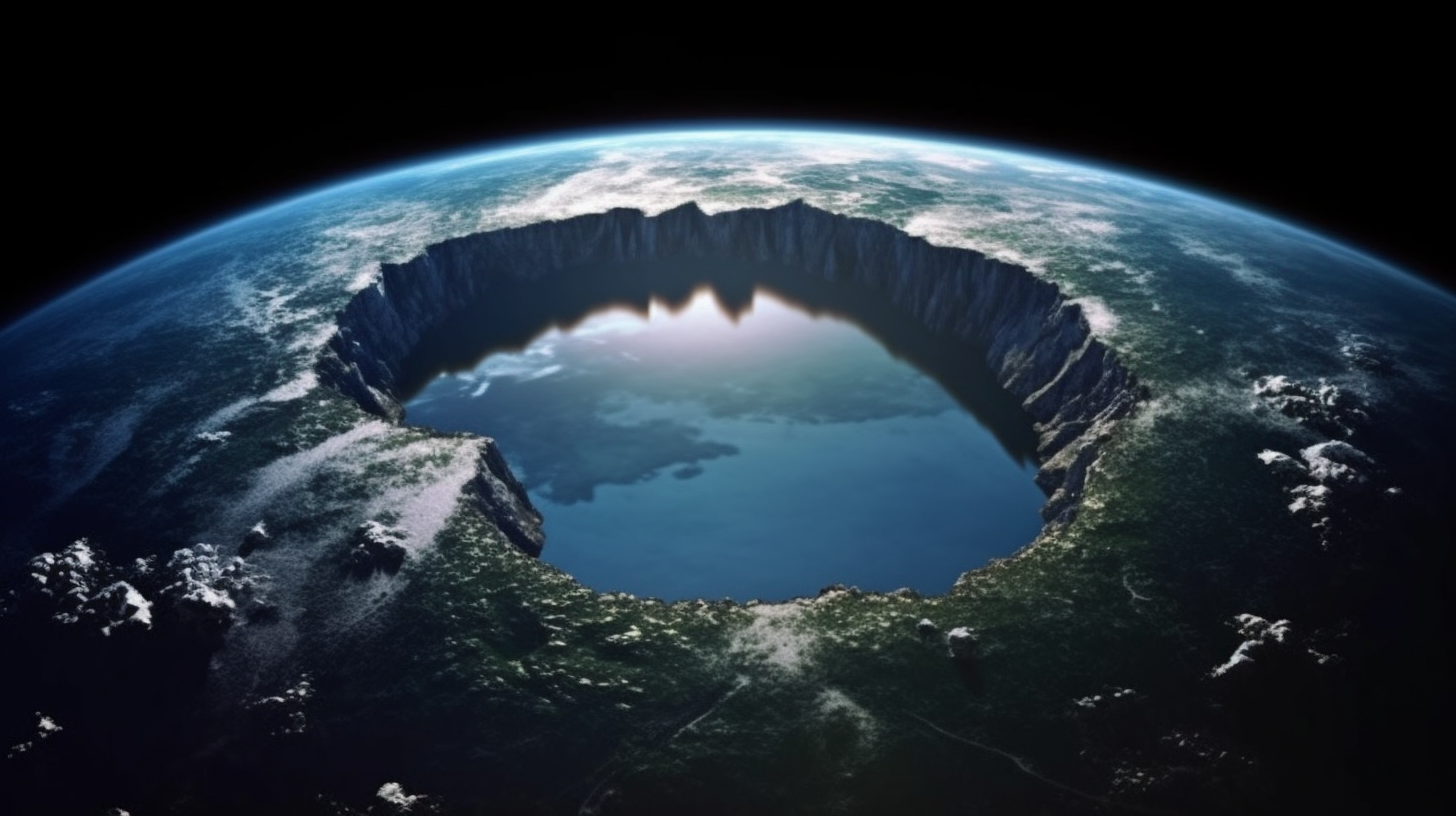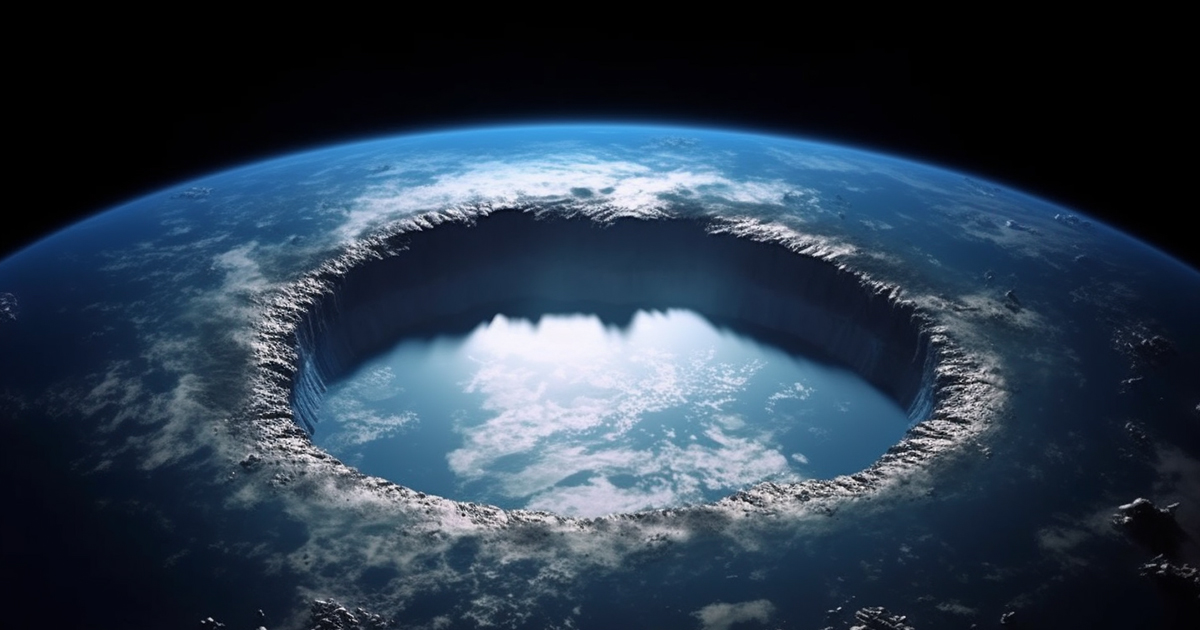Introduction
Embedded within a labyrinth of conspiracy theories and mysterious tales of ancient aliens, we encounter the enigmatic notion known as the Hollow Earth Theory. This intriguing concept suggests that beneath the Earth’s surface lies an undiscovered realm waiting to be revealed. Despite its resemblances to a sci-fi storyline, the concept of a hollow Earth has captivated intellectuals and thinkers for centuries. This article embarks on a journey delving into the captivating evolution of the Hollow Earth Theory, tracing its inception from early proponents to its modern resurgence, fueled by a blend of scientific inquiry and conspiracy conjectures.
The Startling Geologic Revelation
Our expedition commences on June 13, 2014, when researchers exploring the Earth’s mantle made a groundbreaking discovery. They unveiled the presence of a vast body of water, thrice the size of all Earth’s oceans combined, nestled within a mineral stratum located 400 miles beneath our feet. This disclosure shook the traditional understanding of Earth’s composition, casting uncertainties on our perceptions of our planetary abode.

An Expedition to Earth’s Depths
The Earth’s surface merely scratches the veneer of the planet’s total bulk. Descending just 8 miles down, we encountered intense heat that impeded further exploration. With over 4,000 miles to reach the core, it serves as a stark reminder that we possess more knowledge about the moon’s surface than we do about our planet’s depths.
Ancient Legends and the Inner Earth
Within various ancient mythologies, proponents of ancient astronauts suggest the existence of a hidden Earth deep within our realm rather than in the skies. Across diverse cultures, a prevalent narrative persists: the belief in an inner realm. For example, Buddhism recounts tales of Agartha, an advanced inner domain inhabited by beings with sophisticated technologies like trains and vehicles.
The Trailblazers of Hollow Earth Theory
Throughout history, the concept of subterranean worlds transcended mythologies. Distinguished scientists and mathematicians like the famed Edmond Halley, renowned for Halley’s Comet, delved into theories regarding Earth’s internal structure. Halley envisioned a hollow Earth with multiple strata.
Another notable scholar, 18th-century mathematician Leonhard Euler, introduced his unique theory of a hollow Earth. In Euler’s narrative, Earth not only was hollow but also possessed slender polar regions with pathways to the inner core. He posited that advanced civilizations thrived within the planet’s depths.
Admiral Byrd’s Mysterious Voyages
The resurgence of Hollow Earth theories took an intriguing turn in 1947 when polar explorer Admiral Richard Byrd undertook reconnaissance missions over the North Pole. Byrd supposedly documented a mysterious land beyond the North Pole, dubbed the “center of the great unknown.” Moreover, it’s suggested he encountered gateways to a sophisticated civilization dwelling in the inner Earth.
Byrd’s accounts of his escapades and a “new form of craft” capable of traversing from pole to pole fueled curiosity and fascination. Upon his return to the United States, he purportedly received counsel to remain discreet about his findings.
Are There Gateways to the Inner Earth?
The persisting query revolves around the existence of gateways to an alternate realm at the Earth’s polar regions. Advocates of ancient astronaut hypotheses vehemently argue for the presence of these gateways, potentially leading to a vibrant inner Earth teeming with advanced beings and societies.
Visual Representation:
Parting Reflections
The Hollow Earth Theory continues to captivate many, sparking dialogues between adherents and doubters. While maintaining a prudent skepticism towards such theories is crucial, the notion of a concealed realm within our planet perseveres, reminding us of the uncharted territories on Earth. Whether actuality or fantasy, the concept of a hollow Earth encourages us to probe the unknown, broaden our comprehension of the world, and challenge the boundaries of human awareness. As time progresses, the Earth’s depths may harbor secrets beyond our wildest imaginations.
